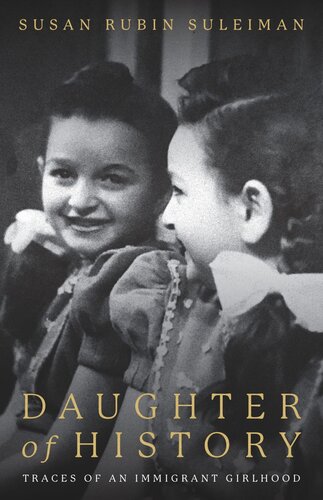

Most ebook files are in PDF format, so you can easily read them using various software such as Foxit Reader or directly on the Google Chrome browser.
Some ebook files are released by publishers in other formats such as .awz, .mobi, .epub, .fb2, etc. You may need to install specific software to read these formats on mobile/PC, such as Calibre.
Please read the tutorial at this link: https://ebookbell.com/faq
We offer FREE conversion to the popular formats you request; however, this may take some time. Therefore, right after payment, please email us, and we will try to provide the service as quickly as possible.
For some exceptional file formats or broken links (if any), please refrain from opening any disputes. Instead, email us first, and we will try to assist within a maximum of 6 hours.
EbookBell Team

4.1
100 reviewsA photograph with faint writing on the back. A traveling chess set. A silver pin. In her new memoir, noted scholar and author Susan Rubin Suleiman uses such everyday objects and the memories they evoke to tell the story of her early life as a Holocaust refugee and American immigrant. In this coming-of-age story that probes the intergenerational complexities of immigrant families and the inevitability of loss, Susan looks to her own life as an example of how historical events shape our private lives.
After the Nazis marched into Hungary in 1944, five-year old Susan learned to call herself by a Christian name, hiding with false papers in Budapest with her parents. While her relatives in the provinces would be among the 450,000 Hungarian Jews deported to Auschwitz, Susan's close family survived and even thrived in the years following the war. But when the Communist Party took over Hungary, Susan and her parents emigrated to Chicago by way of Vienna, Paris, Haiti and New York. In her adult life as a prominent feminist professor, she rarely allowed herself to think about these chapters of her past—but eventually, when she had children of her own, she found herself called back to Budapest, unlocking memories that would change the direction of her scholarship and career.
At the center of this richly textured memoir is a little girl who grows up happy despite the traumas of her early years, surrounded by a loving family. As a teenager in the 1950s, she is determined to become "100% American," until a post-college year in Paris leads her to realize that her European roots and Americanness can coexist. At once an intellectual autobiography and a reflection on the nature of memory, identity, and home, Daughter of History invites us to consider how the objects that underpin our lives become gateways to our past.